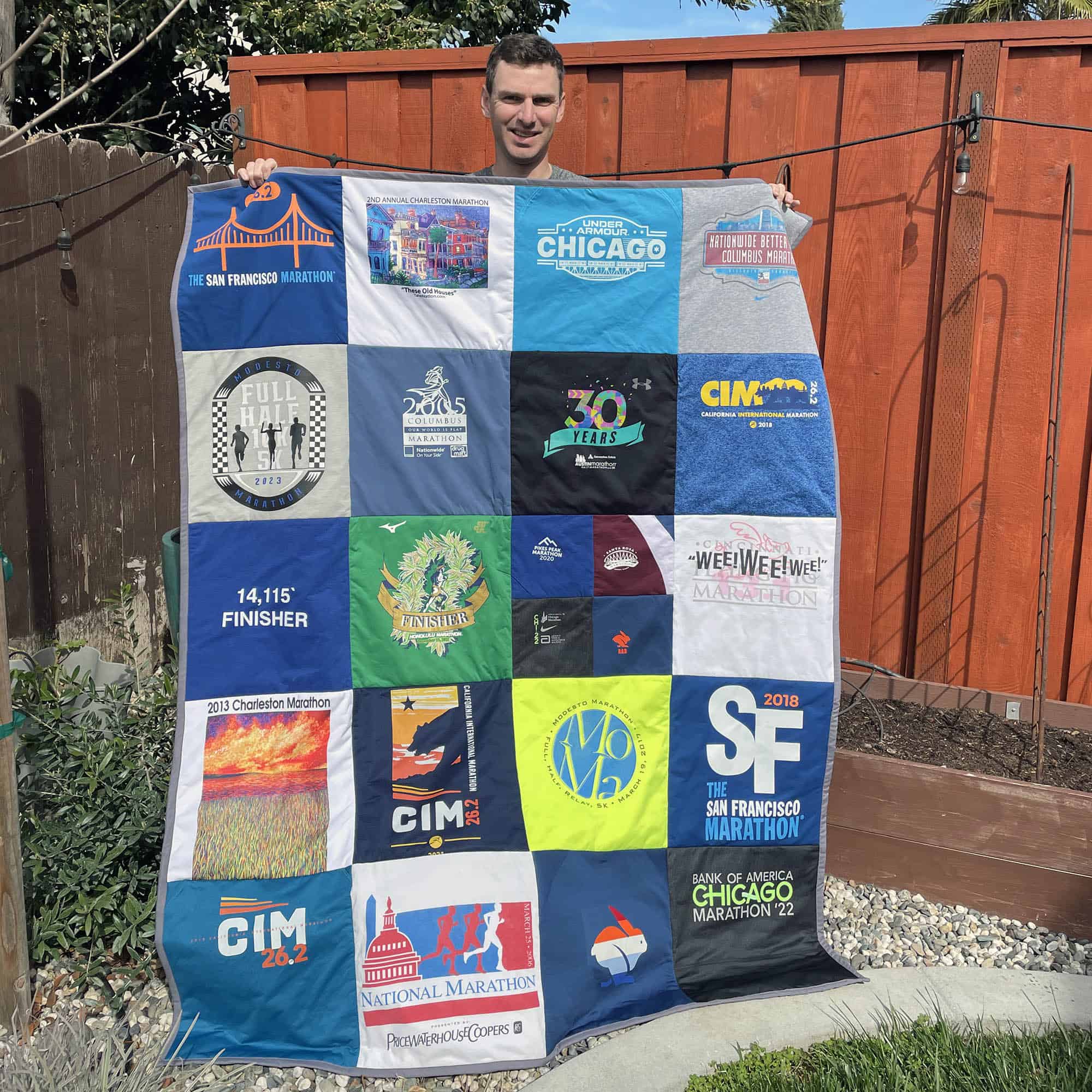Common Running Mistakes
When we are new to running or pushing hard toward a running goal, it is easy to fall victim to these common running mistakes. Almost all runners have made at least one of these mistakes during their training and racing. The goal is to learn from these mistakes before injury, burnout, or a decline/staleness in performance forces us to make a change. Which mistakes sound like you?
1. Increasing weekly mileage too soon
The excitement of beginning a running plan or signing up for a race can easily lead you to run too many miles out of the training gate. We have to remember that running is a high-impact and repetitive activity that takes time for our bodies to adapt. The amount of time to adjust to long-distance running is different for everyone, so you must listen to your body when deciding whether to increase your mileage or not.
A good rule of thumb is to start right where you currently are with your fitness and slowly build from there—coming off the couch? Then, it’s best to start with a run-walk program. Exercising regularly, but running has not been the primary form? Then, begin with easy-paced running (a pace that you can talk in complete sentences) for 20 to 30-minutes every other day for 2 to 3 weeks. Once you feel comfortable with regularly running, the rule is 10-percent. Meaning, you should increase your weekly training mileage by no more than 10-percent each week.
2. Running too fast too soon
The more you run, the more your body adapts, and naturally, the faster you will get. However, adding in hard speed workouts or tempo runs is best saved for the future. Give yourself plenty of time to build up a solid cardiovascular/endurance base of fitness and strength (6 to 8 months, 3-5 times per week). With a good command of endurance, you will improve more quickly, recover more efficiently, reduce the risk of injury, and have more fun doing it!
3. Setting goals without proper time to train
Setting goals and signing up for races can have a tremendously positive impact on our motivation to train. However, setting goals without consideration for the proper time to prepare for them is ill-advised. Without adequate time to prepare for an event, you will most likely experience higher amounts of stress, frustration, and an increased risk of injury.
Coaches and running experts don’t right training plans of “X” number of weeks for no reason. It’s scientifically based on how our bodies adapt and progress for optimal performance without injury (both physically and mentally). Remember, most fitness and running events happen every year, so pick a goal with sufficient time to train and have fun training for it!
4. Following too many training plans or goals at once
It is challenging to be optimally proficient in multiply racing distances at the same time. Imagine trying to work two 40 hours per week jobs that are on opposite sides of the country. Find a plan and race distance to focus on and see it through to race day. In addition, this training plan should always be dynamic and progressive, allowing for adjustments around your lifestyle. With experience, you will find your ideal training routine and progress to all your desired race distances.
5. Running the same pace all the time
Don’t just run, and don’t just run the same way every time. When we are new to running, keeping a steady conversational pace is very important. This consistent pace builds endurance, allows your body to adapt, and reduces the risk of injury. As a new or experienced runner, make sure you build other activities (cross-training) into your running routine as well. Cross-training can build muscles, speed recovery, and keep your training program feeling fresh. Keep your cross-training going once you are experienced with running, but add in additional freshness to your routine with hills, speed workouts, tempo runs, and other paced running workouts.
6. Following your friend’s training plan
What works for one runner does not necessarily work for another runner. It is easy not to listen to your own body when you join a group training plan or follow your buddy’s training plan. You may be faster or slower, not meant to run a certain distance, or need an extra day of rest every once in a while. We’re not saying, don’t train with others. Instead, make sure to follow your plan, listen to your body, ask for advice, and adapt the strategy when necessary.
7. Ignoring the importance of strength and flexibility
We love to run, and sometimes we forget about how other activities can help us run even better! Having weak or tight muscles will lead to poor running form and efficiency and a significantly increased risk of injury over time. It can be pretty simple to improve your strength and flexibility by slightly tweaking your already established running routine. During your next run, run for 10 to 15-minutes, then stop to perform a few drills (i.e., high knees, butt kicks, lunges, etc.). After the run, complete some post-run stretching or foam rolling before jumping back in the car. On your easy or rest days, participate in a yoga class, complete resistance training, or cruise around the neighborhood on your bike. Aim for 2 to 3 times per week of consistent cross-training, and you will see improvements in your running form as well as a boost in your metabolism!
8. Always running by pace rather than by feel
When you set out to run at a specific pace on your watch, you may be running too quickly or slowly for that day. It is important to remember every day is a different day. Some days you may have lots of energy, and running comes effortlessly, while other days, you may struggle from start to finish. Everything we do can potentially impact your ability to run on a given day (sleep, nutrition, hydration, stress, weather, travel, training progressions). The key is to let your body be your fine-tuning mechanism for the pace and not your watch. Use your watch as a reference point during the run in comparison with your perceived effort.
On easy days, in general, if you can hear your breathing or cannot talk in complete sentences, then you are going too fast. For moderate effort runs, you should listen to your breathing but not feel out of breath. And on those hard effort days, run outside of your comfort zone but still in control of your breathing and running form. Running by feel will allow for a better all-around training routine and more enjoyment from each run.
9. Choosing your running shoes based on the latest trends
Pay attention to what shoes are advertised and what your running buddies are wearing, but don’t pick running shoes based on the trends in your running circle. Get appropriately fitted for your first pair of running shoes. Consider getting re-fitted if you are coming back from a layoff or injury, changing race distance or terrain, or if you feel that something is not working the same anymore. Having the correct running shoes for you is one of the best investments you can make to your overall health and fitness.
A specialty running store is there to help match the footwear to your running style and foot type. Once they determine if you over-pronate or supinate and discuss your running history, they can narrow down the hundreds of shoe selections for you.
After you purchase the correct running shoes, make a note of the date and track your mileage. Running shoes are only going to last 300 to 500 miles. When your shoes start to wear down, they lose their cushioning and support. When the tires on your car lose their trend and feel smooth, you lose your traction in the rain and snow. The same thing is true for your running shoes, a loss in cushioning or support means you are back at an increased risk for injury.
We like to recommend that halfway through the life of your shoes, you go ahead and purchase a new pair to start rotating into your runs. Depending on how advanced your running is, you may find it advantageous to have specific shoes for track workouts or long runs.
10. Setting your hopes and dreams on a specific time goal
The average runner focuses way too much on achieving a specific race time (i.e., running a 2-hour half marathon or a 4-hour marathon). Why? For one, we like round numbers. Also, many races that we tend to focus on (i.e., Boston Marathon, Western States 100, etc.) have specific time standards for entry. However, an elite runner does not toe the starting line with a particular time in mind; their goal is to win. They can win with a slow time or lose while setting a personal best. An elite runner’s focus is on running their best possible performance on that day. Focusing less on pace and times can allow you to run more relaxed and respond with less effort to the various challenges that occur during a race.
If you are new to running a race distance, have fun and focus on finishing with a smile. For the more experienced runners, race by feel and let the chips fall where they may. With this focus, you will find yourself running faster and happier than ever before!
A Training Plan that Works for You.
Our collection of running plans will help you train year-round. From 5k to a 100-mile ultramarathon, we have a training plan built for your experience level and goals. Every plan is delivered via Final Surge, allowing you to sync workouts across devices, receive daily reminders of workouts and activities, and analyze workout and target zone details. Get started today with a training plan built for you, view our running plans here.














